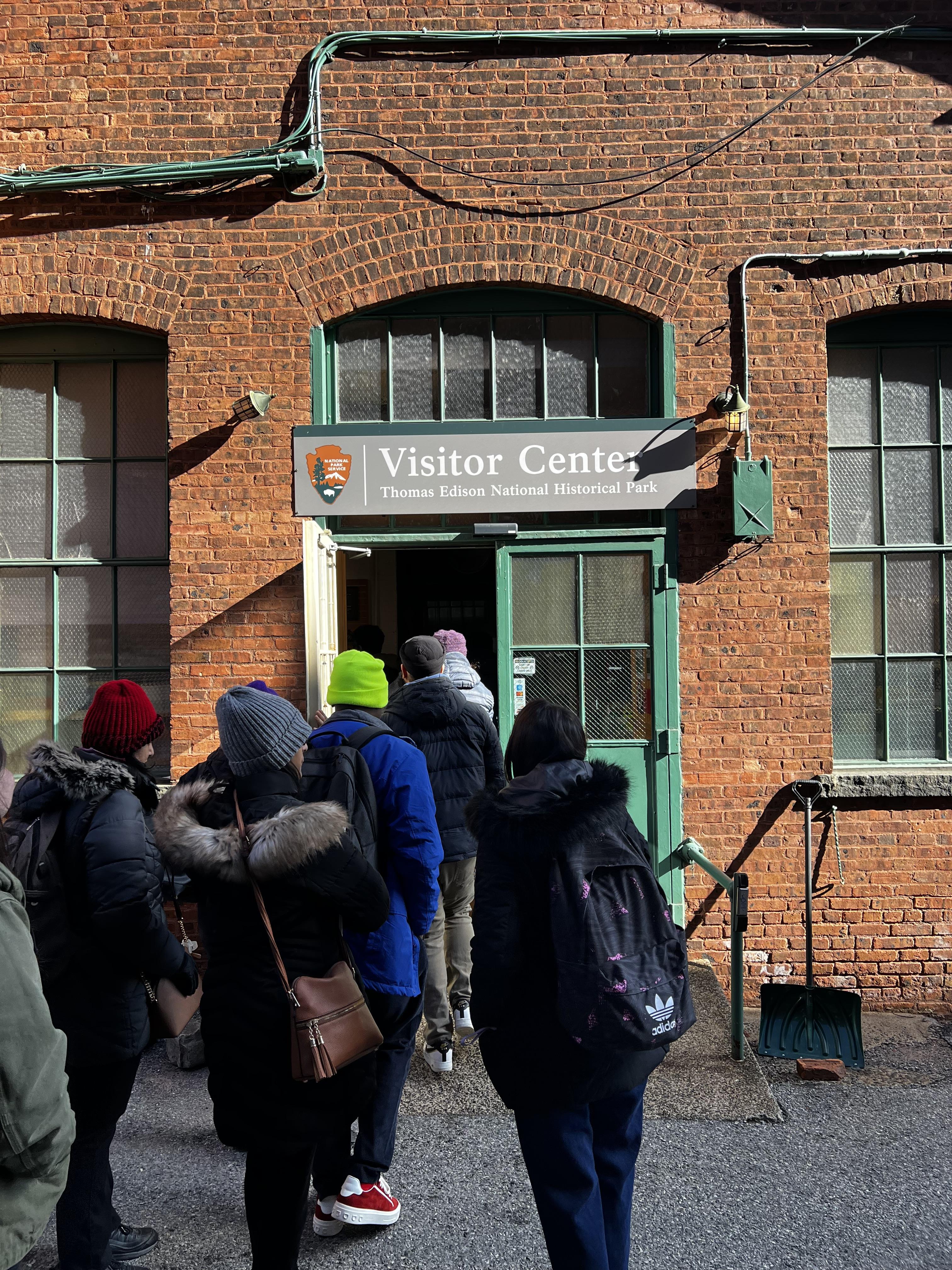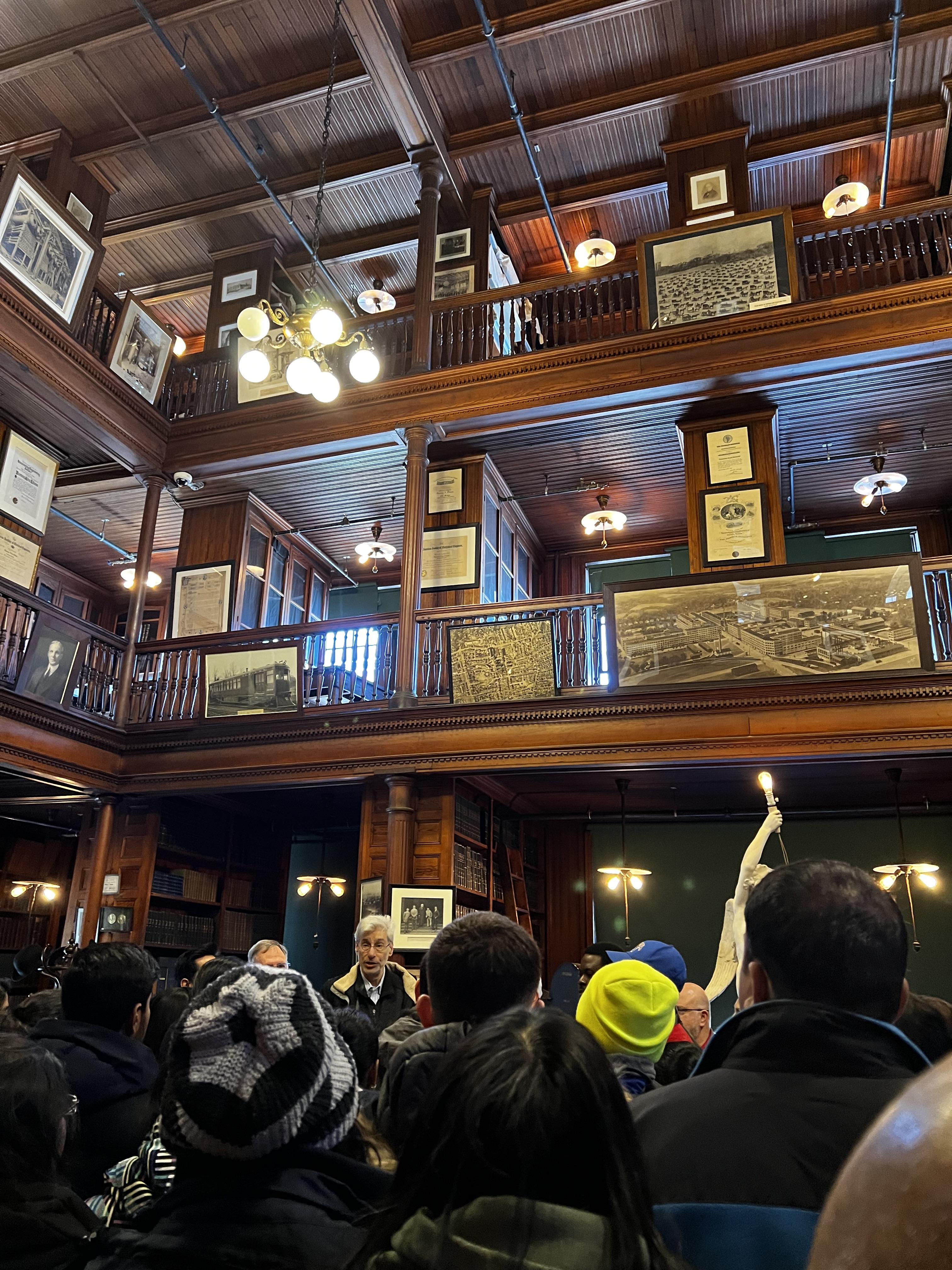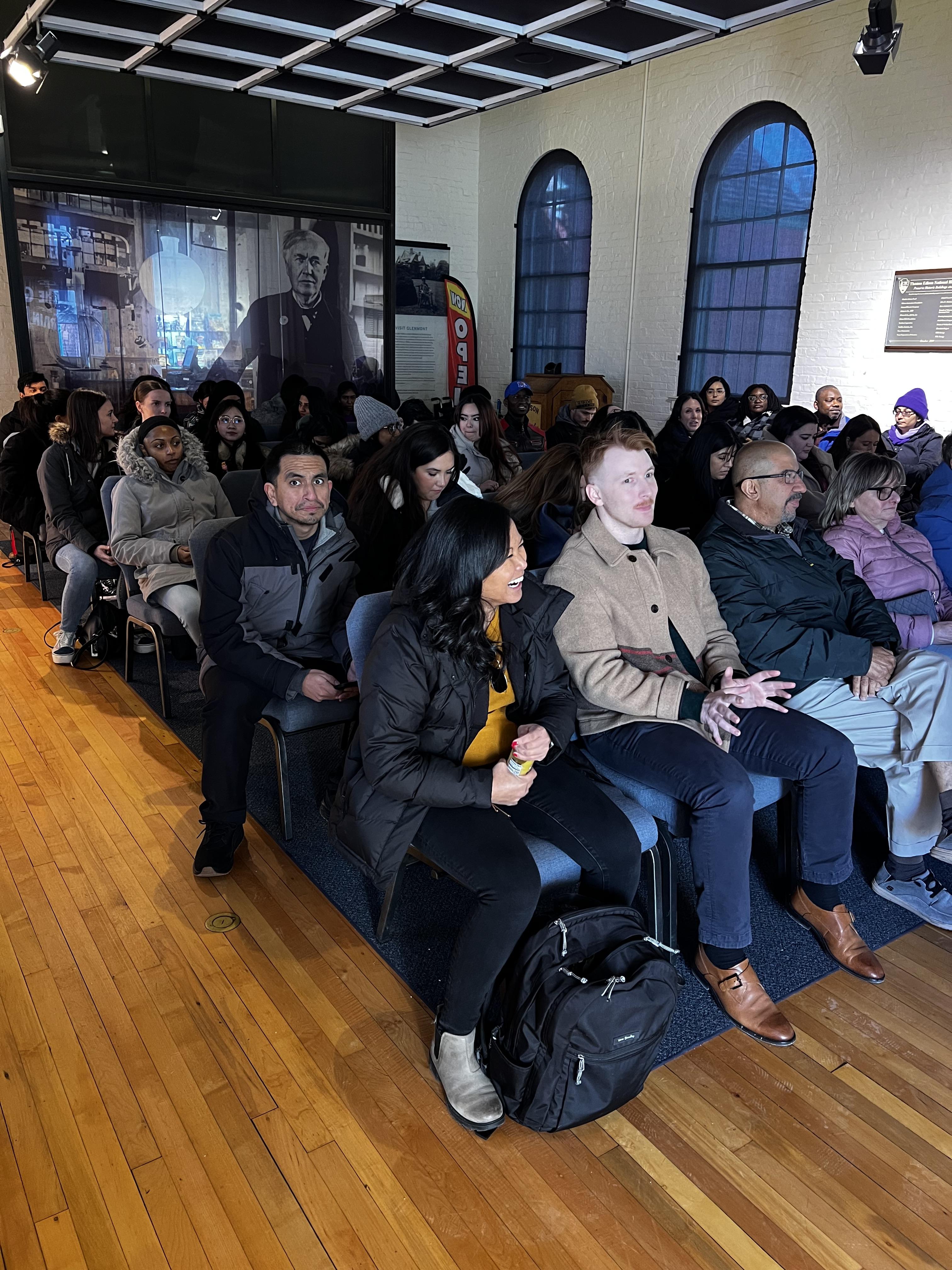Innovation is the heart of scientific progress, but it doesn’t happen in a vacuum. Innovation requires research, experimentation, and ecosystems that fuel creativity. Students pursuing the Master of Business and Science (MBS) degree enroll in the course Science and Technology Management Capstone, where they work in teams to pick a science-based intellectual property and develop a plan to take it to market.
Last week, we invited Capstone students to join us for a retreat. Capstone students gathered at the Labor Education Center for two days of team-building, workshops, and lectures—including a field trip to the Thomas Edison National Historical Park in West Orange, New Jersey.



Innovation Ecosystems
Capstone lead instructor Tom Bryant, PhD, raised the question of how science-based innovation can be promoted through investment in spaces that nurture creativity and experimentation. From Edison’s labs to modern tech incubators, the environments where scientific discovery happens are critical to breakthroughs.
On the morning of Friday, February 21st, MBS students, staff, and faculty boarded a bus bound for the park. Paul Israel, Director and General Editor of the Thomas A. Edison Papers at Rutgers, led the group on a private tour. He asked students to consider the role of inventors and their ecosystems in shaping the future. Edison’s legacy showed how the right leadership and resources can create a culture of sustained innovation.
The MBS group explored the grounds, visiting Edison’s library and laboratory. They received insight from Israel and viewed inventions with patents held by Edison—including the phonograph and lightbulb.
After the trip, students shared key takeaways and insights from the experience. Through this trip, students saw the environment that allowed Edison’s ideas to flourish.
This trip also encouraged students to think about their own environments. How do we create spaces that promote similar breakthroughs? How do we inspire the next generation of innovators? And how do we ensure investments in innovation ecosystems, like science museums or tech incubators, are used effectively?
No Bad Ideas: Igniting Creativity
After returning from the museum, students took part in a hands-on exercise in innovation: a skunkworks project. In groups, students chose from a collection of candy and snacks and were asked to generate many new product ideas within five minutes.
This exercise pushed students to embrace creativity without worrying about perfection. Students repeated the exercise twice more—and each group produced a higher number of ideas in the same time frame.
Bryant guided students in choosing the idea best suited for different markets and concluded with market research: students voted on the most promising ideas in each category. In just fifteen minutes, the room generated over 1,000 ideas.
A Legacy of Innovation
This retreat was not an event to miss! Students travelled from all over the United States to attend, including Boston, Chicago, Colorado, Texas, and more.
“I traveled in from Los Angeles, California,” said David Grigorian, an MBS student pursuing a concentration in Drug Discovery and Development. “I really wanted to meet the wonderful people in the classes that I’ve been attending for the past two years. I’ve formed a lot of friendships during those courses, and it was nice to see everyone in person.”
Although Grigorian has been traveling to New Jersey for work, this was his first time seeing the Rutgers campus. He was excited about the workshops on the second day of the retreat.
This retreat also held a special surprise for anyone with a sweet tooth. Bryant and students participated in the Great Capstone Bakeoff, bringing baked goods to share with the class.
Good luck to all MBS Capstone students! The MBS team looks forward to seeing your innovative ideas at the end of the semester. To learn more about our Capstone course, read about last semester’s presentations.
